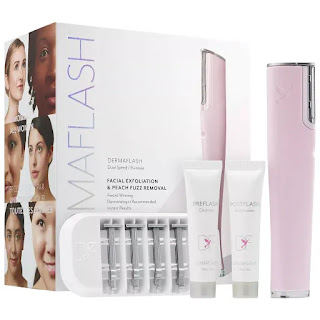Hair Removal Guide: Which Method Is Best for You?
There are heap strategies to browse with regards to hair expulsion—some increasingly exorbitant, some progressively entangled, some progressively agonizing, some more extended enduring than the following. In this manual for hair evacuation, Rachana Jani, MD, a doctor in New York City, remarks on the advantages and disadvantages of eight normal fluff battling methods. Peruse on, at that point choose which one is directly for you.
1. Shaving
Shaving is one of the least expensive and most effectively open strategies for expelling hair since you can do it without anyone else's help in the shower—and it just takes an additional moment or two to cover huge zones, for example, your legs.
Best for: Legs, underarms, and potentially the swimsuit line (in case you're not inclined to disturbance, razor knocks, and ingrown hairs).
Security concerns: Nicks and cuts are a chance, yet on the off chance that you utilize a razor intended for a lady (which is intended to deal with the bends around lower legs and knees), supplant the sharp edge as often as possible, and grease up skin well with a rich shave gel or froth, you can limit any likely harm.
2. Depilatory Cream
"These items contain synthetics that work by separating the disulphide bonds in the keratin of the hair," clarifies Jani. When those bonds are broken, hair is powerless enough that you can truly wipe or wash it off your skin. One drawback to this technique is that those vital synthetic compounds can have a terrible smell.
Best for: Legs, two-piece region, upper lip, and jaw. Search for creams defined only for the face, which are gentler than those planned to use on coarser leg hair.
Security concerns: Some individuals—particularly those with touchy skin—find that the synthetic concoctions in depilatories can cause disturbance. So as to limit redness and aggravation, don't leave the item on longer than should be expected. Most require around five minutes on the skin so as to work, yet in case you're touchy, decide in favor of less time.
3. Waxing
Warm, liquefied wax is applied to the skin in strips, following a similar bearing as hair development, at that point pulled off the other way. The warmth makes the hair follicles widen somewhat, making it simpler for the whole hair, including the root, to be evacuated.
Best for: Small territories, for example, the upper lips, eyebrows, and two-piece region.
Security concerns: You shouldn't wax any regions on which you normally apply Retin A. Since it helps shed dead layers, Retin A can thin the skin; waxing that skin can cause redness, aggravation, and harm.
Waxing can likewise cause ingrown hairs, particularly in the swimsuit zone. To limit the hazard, peel skin before waxing; dead skin cells can stop up the hair follicles and add to the danger of ingrown hairs. Click Here Click Here Click Here Click Here Click Here Click Here Click Here Click Here Click Here Click Here Click Here Click Here Click Here Click Here Click Here Click Here Click Here Click Here Click Here Click Here Click Here Click Here Click Here Click Here Click Here Click Here Click Here Click Here Click Here Click Here Click Here Click Here Click Here Click Here Click Here Click Here Click Here Click Here Click Here Click Here Click Here Click Here Click Here Click Here Click Here Click Here Click Here Click Here Click Here Click Here Click Here Click Here Click Here Click Here Click Here Click Here Click Here Click Here Click Here Click Here Click Here Click Here Click Here Click Here Click Here Click Here Click Here Click Here Click Here Click Here Click Here Click Here Click Here Click Here Click Here Click Here Click Here Click Here Click Here Click Here Click Here Click Here Click Here Click Here Click Here Click Here Click Here Click Here Click Here Click Here Click Here Click Here Click Here Click Here Click Here Click Here Click Here Click Here Click Here Click Here



Comments
Post a Comment